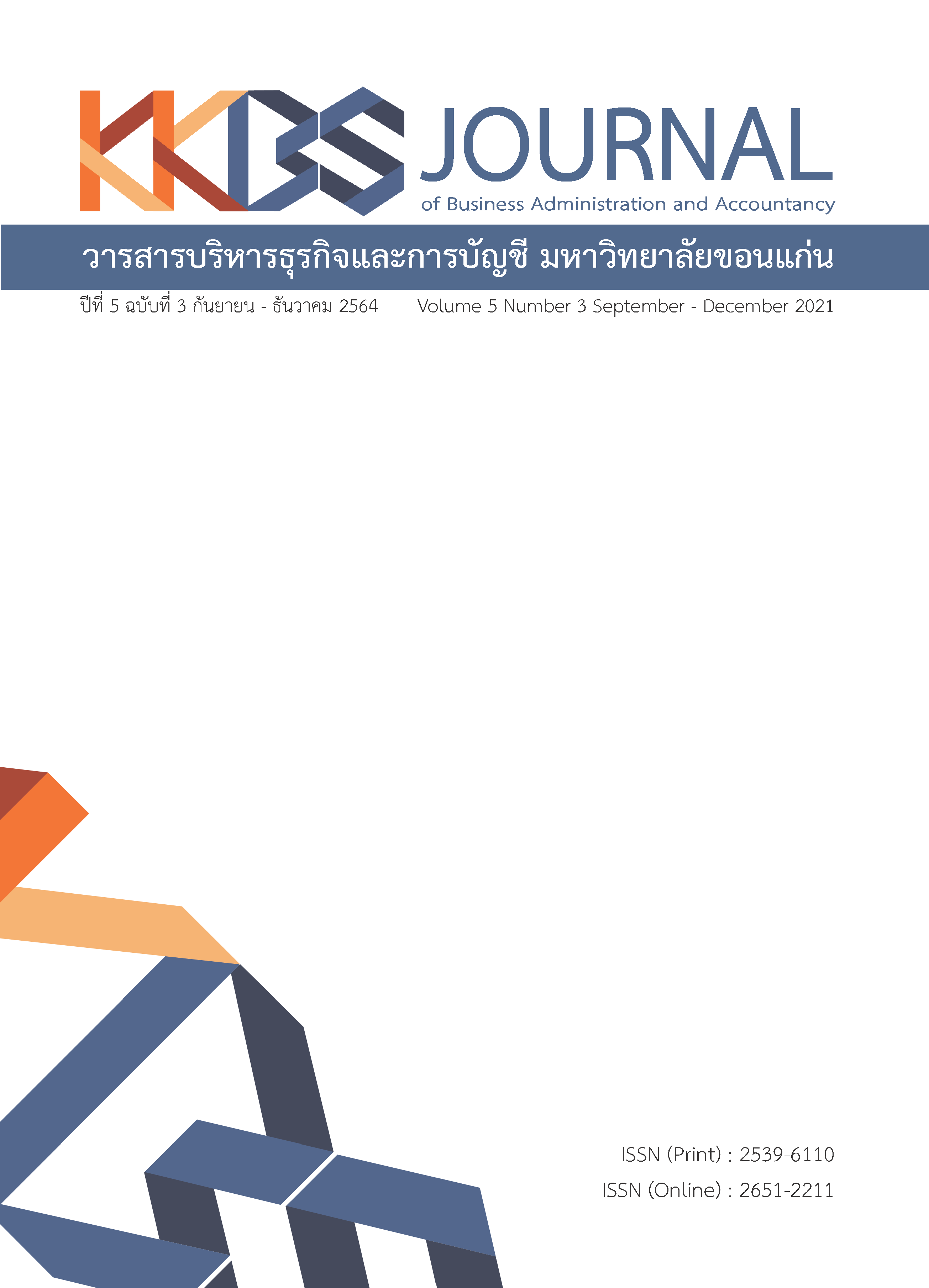A Study of Relationship Among Hotel Service Recovery Strategies, Guest Perceived Justice and Guest Satisfaction with Service Recovery
Main Article Content
Abstract
The purpose of this research was to study the relationship of hotel service recovery strategies, guest perceived justice and guest satisfaction with service recovery. The mediating effect of perceived justice on the relationship between service recovery strategies and service recovery satisfaction was also examined. This study was a survey research. Traditional and online questionnaires were used in collecting data from a sample of 400 hotel guests who had experience with service failures during their stay at hotels in Bangkok and had experience with the service recovery. The data were analyzed in forms of percentage, mean, standard deviation. The partial least squares method and the Sobel's Test were used to test the hypothesized relationship in the structural equation model.
The results of hypothesis testing from the structural equation model showed that the service recovery strategies had a positive relationship with service recovery satisfaction and perceived justice. The perceived justice had a positive relationship with the service recovery satisfaction. In addition, the perceived justice also mediated the relationship between the service recovery strategies and the service recovery satisfaction. When the coefficient obtained from the estimation was used to calculate the indirect effect on the overall effect, it was found that perceived justice partially mediated the service recovery satisfaction.
Article Details

This work is licensed under a Creative Commons Attribution-NonCommercial-NoDerivatives 4.0 International License.
The articles published in the journals are the authors' opinions, not the opinion of the editorial team or administrative staff. The articles published is copyright of the Journal of Business Administration and Accounting, Khon Kaen University.
References
Aekakul, T. (2009). Research Methods for the Behavioral and Social Sciences. Ubon Ratchathani: Ubon Ratchathani Rajabhat University. (In Thai)
Blodgett, J.G. & Tax, S.S. (1997). The effects of distributive, procedural, and interactional justice on postcomplaint behavior. Journal of Retailing, 73(2), 185-210.
Boshoff, C. (2005). A re-assessment and refinement of RECOVSAT. Managing Service Quality: An International Journal, 15(5), 410-425.
Chareonpol, V. (2011). The problem of hotel rooms overflowing Why …. and how to solve the problem. Retrieved December 24, 2019, from https: //www.scbeic.com. (In Thai)
Department of Business Development. (2018). Annual report 2018. Retrieved December 24, 2019, from https://www.dbd.go.th. (In Thai)
Ellyawati, J. et al. (2013). Perceived justice in service recovery: Study of experimental design on Indonesian customers. International Journal of Business and Management Studies, 2(2), 511–522.
Field, A. (2005). Reliability analysis. 2nd Ed. London: Sage Publications.
Goodwin, C. & Ross, I. (1990). Consumer evaluations of responses to complaints: What’s fair and why. Journal of Consumer Marketing, 7(2), 39-47.
Grönroos, C. (1988). Service quality: The six criteria of good perceived service quality. Review of Business, 9(3), 10-13.
Hair, J.F. et al. (2006). Multivariate data analysis. Upper Saddle River, NJ.: Pearson.
Hair, J.F. et al. (2014). Partial least squares structural equation modeling (PLS-SEM): An emerging tool for business research. European Business Review, 26(2), 106-121.
Ikponmwen, E. (2011). The effects of service recovery satisfaction on consumers’ behavioral intentions: An application in North Cyprus five-star hotels. Greece: Eastern Mediterranean University.
Jhantasana, C. (2020). Methods of reporting research results of second-order construct of PLS-SEM. Chulalongkorn Business Review, 42(3), 39-67. (In Thai)
Karatepe, O.M. (2006). Customer complaints and organizational responses: The effects of complainants' perceptions of justice on satisfaction and loyalty. International Journal of Hospitality Management, 25(1), 69-90.
Kelley, S.W. & Davis, M.A. (1994). Antecedents to customer expectations for service recovery. Journal of the Academy of Marketing Science, 22(1), 52–61.
Krungsri Research. (2017). Industry trends in 2018 – 2020: Hotel business. Retrieved December 20, 2019, from https: //www.krungsri.com.
Kuo, Y. & Wu, C. (2009). The relationships among service quality, perceived value, customer satisfaction, and post-purchase intention in mobile value-added services. Computers in Human Behavior, 25(4), 887-896.
Liao, H. (2007). Do it right this time: The role of employee service recovery performance in customer-perceived justice and customer loyalty after service failures. Journal of Applied Psychology, 92(2), 475-489.
Lovelock, C. (2004). Whither services marketing? In search of a new paradigm and fresh perspectives. Journal of Service Research, 7(1), 20-41.
Maxham, J.G. (2001). Service recovery’s influence on consumer satisfaction, word-of-mouth, and purchase intentions. Journal of Business Research, 54(1), 11-24.
Mostafa, R.B. et al. (2015). Corporate image: A service recovery perspective. Journal of Service Research, 18(4), 468-483.
Parasuraman, A., Zeithaml, V.A. & Berry, L.L. (1985). A conceptual model of service quality and its implications for future research. Journal of Marketing, 49(4), 41-50.
Reichheld, F.F. & Sasser, E. (1990). Zero defections: Quality comes to services. Harvard Business Review, 68, 105-111.
Smith, A.K. et al. (1999). A model of customer satisfaction with service encounters involving failure recovery. Journal of Marketing Research, 36(3), 356-372.
Tax, S.S., Brown, S.W. & Chandrashekaran, M. (1998). Customer evaluations of service complaint experiences: Implications for relationship marketing. Journal of Marketing, 62(2), 60-76.

